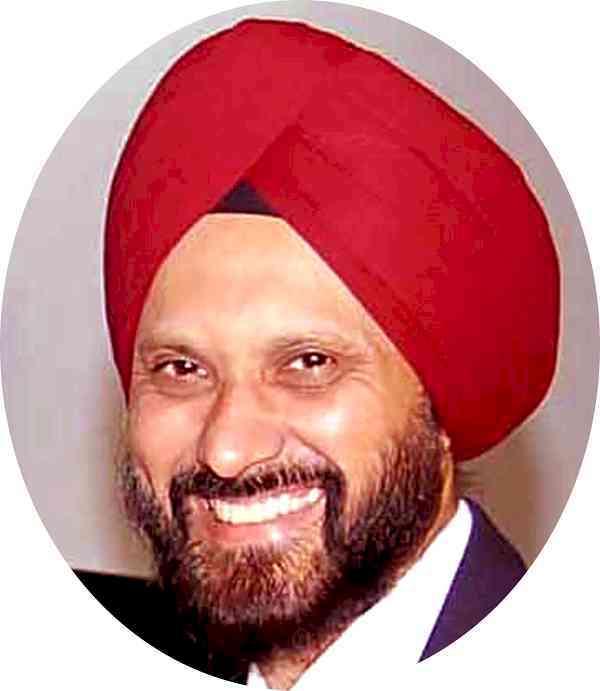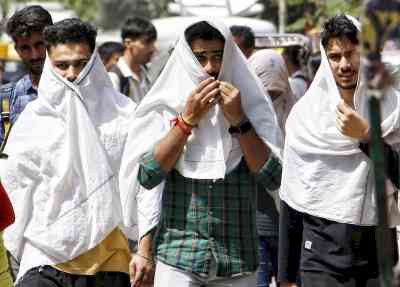EVERY eighth household in Punjab is female headed
Author(s): City Air NewsChandigarh, March 14, 2013: Census 2011 was conducted in two phases viz; ‘Houselisting and Housing Census’ and ‘Population Enumeration’. After the conclusion of Census of India 2011, Tables on Houses, Household...

Chandigarh, March 14, 2013: Census 2011 was conducted in two phases viz; ‘Houselisting and Housing Census’ and ‘Population Enumeration’. After the conclusion of Census of India 2011, Tables on Houses, Household Amenities and Assets available at the national, state, district, tehsil level were released and put in public domain, both in publication form as well as in electronic format. Selected tables from the above compilation pertaining to sex of the head of the household have been released for the first time in the history of Census.
Releasing the data on female headed households for Punjab, Seema Jain, Joint Secretary, MHA, Government of India and Director Census, Punjab said that these tables provide an insight into the living conditions of the Female Headed Households (FHH) in the country, states/union territories and districts. FHH refers to households headed by females. There is a significant variation among states and union territories in respect of households headed by females. At the national level, there are about 270 lakh female headed households constituting 10.9% of the total households. The highest percentage of FHHs are in Lakshadweep (43.7%) followed by Kerala (22.7%), Meghalaya (21.7%), Goa (20.3%) and Himachal Pradesh (18.3%). On the other hand, percentage of FHH is relatively low in Dadra & Nagar Haveli (5.0%), Rajasthan (7.0%), Bihar (7.4%), Jammu & Kashmir (7.9%) and Madhya Pradesh (8.0%), Chandigarh (9.0%) and Haryana has 9.5% and female headed households.
In Punjab, every eighth household (12.4%) is a female headed household. In absolute numbers, out of a total of 54.1 lakh households in the state, 6.7 lakh are female headed and 47.4 lakh are male headed households. Among female headed households, 4.2 lakh are rural and 2.5 lakh urban. Among districts, it varies between 9.2% in SAS Nagar and 18.6% in Hoshiarpur.
Out of the total households in Punjab, 18.7 lakh are Scheduled Caste households among which 2.2 lakh households are female headed and 16.5 lakh are male headed. In other words, 11.7% of the scheduled caste households in the state are female headed households; the corresponding percentages for rural and urban areas are 11.4% and 12.2% respectively.
|
Percentage of Male and Female Headed Households by residence - Punjab |
||||
|
|
Total Households |
SC Households |
||
|
|
Male headed |
Female headed |
Male headed |
Female headed |
|
Total |
87.6% |
12.4% |
88.3% |
11.7% |
|
Rural |
87.3% |
12.7% |
88.6 % |
11.4 % |
|
Urban |
88.0% |
12.0% |
87.8 % |
12.2 % |
Single member female headed households
The percentage of small sized female headed households is higher than that of the small sized male headed households in the country. There are about 49 lac single member female headed households in India out of which three-fourth are in rural areas and the rest in urban areas. In Punjab, 6.9% i.e. 46,172 households in all female headed households have one member, 10.4% have two members and 16.7% have three members. The corresponding figures for male headed households are 1.9% one member household, 5.7% two members households and 10.8% three members households respectively.
6.9% or 46,172 households out of total 6.73 lac female headed households in Punjab are single member female headed households. The percentage of single member male headed households at 1.9% is much lower than that of the female headed households in the state. Among the single member female headed households in Punjab, 29,189 (63.2%) are in rural areas and 16,983 (36.8%) in urban areas.
In the state, 1.0% of the female headed households have ‘no exclusive’ room compared with 1.1% in case of total households. Similarly, percentage of female headed households with one room (18.1%) is less than that of the total households (23.0%). Percentage of female headed households with 6 or more rooms at 4.9% is however, marginally higher than that of total households at 4.7%. Similarly, 93.1% of the female headed households own the house occupied by them which is higher than that of the total households (88.9%).
One out of every 10 female headed households (10.2%) does not have a separate ‘bathroom’ compared with 11.1% in case of total households. One out of every five female headed households has ‘no latrine’ (20.1%) which is marginally less than that of the total households (20.7%). Similarly, 27.7% of female headed households and 27.8% of total households have availability of closed drainage for waste water outlet.
In Punjab 76.4% of the female headed households have a separate kitchen compared with 72.0% of the total households. Percentage of households with ‘no cooking’ is nearly the same at 0.3% for female headed as well as total households. LPG, as the main fuel for cooking is being used by 58.2% of the female headed households compared with 54.5% of total households. In urban areas, 82.6% of female headed households are using LPG compared with 79.3% of the total households in the state. Even in the rural areas, almost every second female headed household (43.6%) is using LPG compared with 38.9% for total households in rural areas in the state.
With regard to availability of assets, female headed households do not lag far behind the male headed households. Percentage of female headed households with availability of Television at 82.6% is the same as that of total households. Even, in case of availability of two wheelers or four wheelers, female headed households are almost at par with that of the total households. In Punjab, 44.0% of the female headed households have scooter/motor cycle/moped and 11.2% have car/jeep/van; the corresponding percentages for total households are 47.4% and 13.1% respectively. Percentage of female headed households with ‘none’ of the specified assets at 6.7% is however, a little higher than that of the total households (4.4%).

 cityairnews
cityairnews 
















